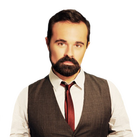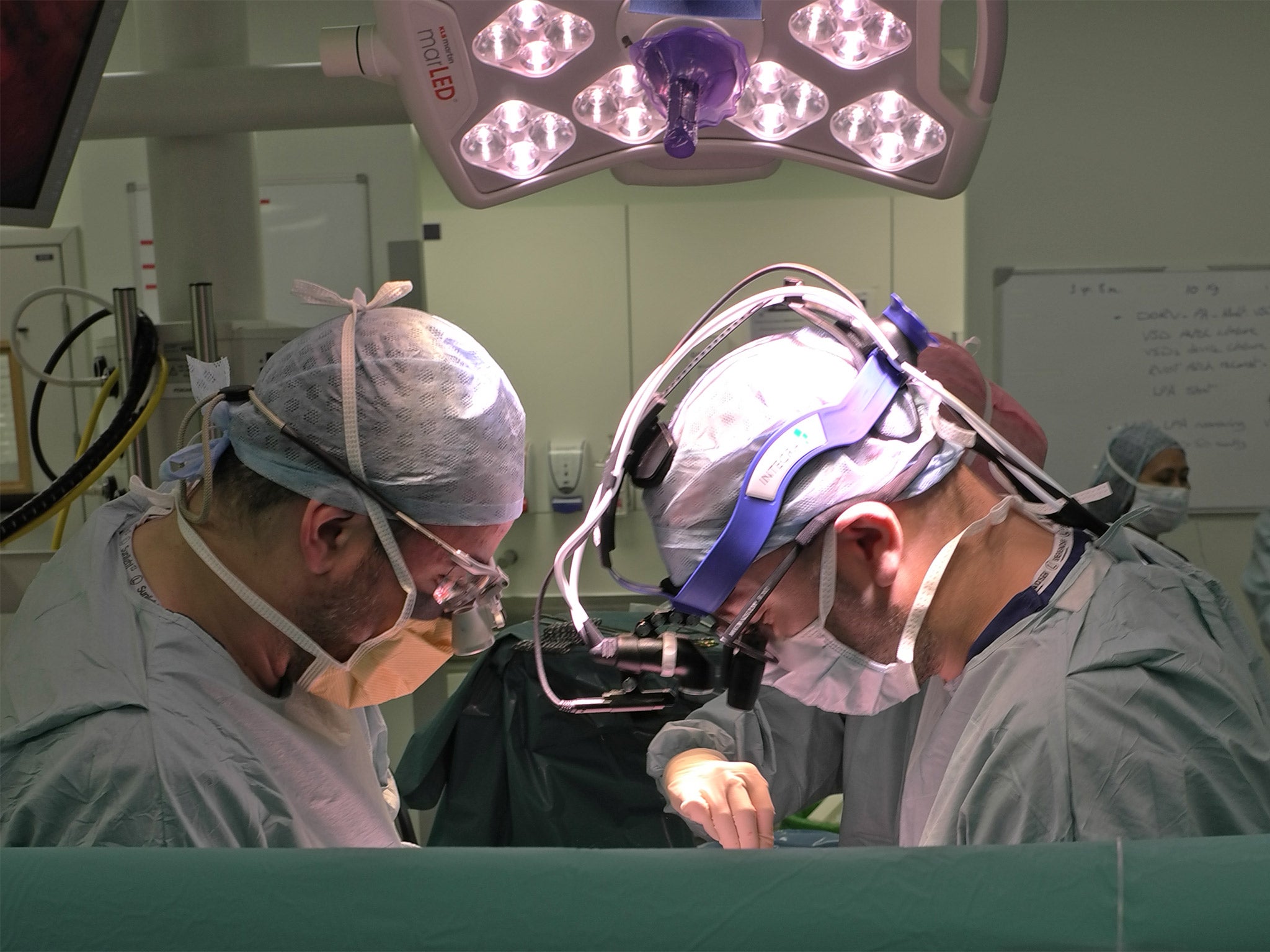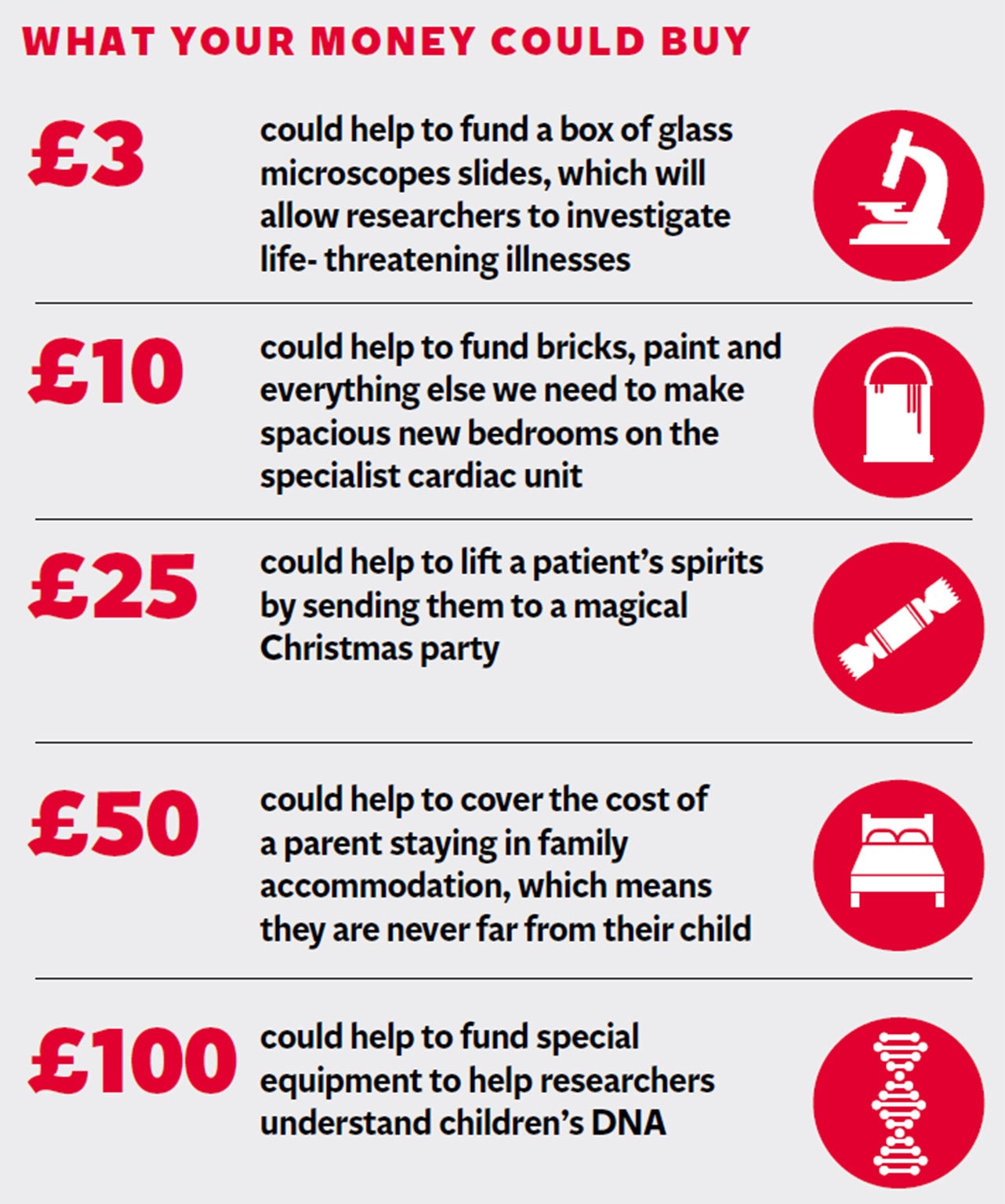A heart no bigger than a golf ball fighting to survive: What I saw during a child's surgery at GOSH
The Independent’s owner, Evgeny Lebedev, watches a remarkable operation on a desperate child whose fate remains unclear


Your support helps us to tell the story
From reproductive rights to climate change to Big Tech, The Independent is on the ground when the story is developing. Whether it's investigating the financials of Elon Musk's pro-Trump PAC or producing our latest documentary, 'The A Word', which shines a light on the American women fighting for reproductive rights, we know how important it is to parse out the facts from the messaging.
At such a critical moment in US history, we need reporters on the ground. Your donation allows us to keep sending journalists to speak to both sides of the story.
The Independent is trusted by Americans across the entire political spectrum. And unlike many other quality news outlets, we choose not to lock Americans out of our reporting and analysis with paywalls. We believe quality journalism should be available to everyone, paid for by those who can afford it.
Your support makes all the difference.Nothing can prepare you for the moment you see a child’s heart beating in its little body. It is not the blood or even the sight of the flesh which has been cut through that shocks the most. It is the size of the heart itself, little more than a golf ball, and the way it works so hard and so incessantly to keep the blood driving through the body.
There is no more effective reminder of our fragility. This single, busy organ was trying to keep this child alive.
It was, I am not embarrassed to admit, a humbling moment, made even more so by the surgeons beside me, gathered around the child working methodically, and mostly silently, to bring his heart back to full health.
I had been given the great honour of being allowed to watch first-hand the surgeons at Great Ormond Street Hospital (GOSH) do what they do best: saving critically ill children’s lives. With a series of delicate, barely perceptible movements they were grafting parts of the arteries coming from the child’s heart back together, while around them nurses and anaesthetists made sure the boy on the operating table – who was not even two years old – remained in a stable state.
Leading surgeon Dr Martin Kostolny does operations like this 250 times a year, an average of almost once every weekday. “A good night’s sleep is vital,” he told me.
“I need my concentration levels. You have the life of a child in your hands. That’s why it is key to put your emotions aside and be as professional as possible. Being calm in those difficult situations really helps me get the best out of my team, and that is something I think about a lot.”
One of the main objectives of this year’s Christmas appeal is to raise money for a 14-bed specialist heart unit that Great Ormond Street Hospital (GOSH) is intending, with your help, to complete. The unit will help men and women like Dr Kostolny and his team try to save other children like the one I saw that day.
The hospital knows it needs more space and better, more modern buildings so it can meet the growing demand to help more patients from across the country. The funds we raise will help to equip this heart unit and make sure it meets the highest international standards for every child that is treated there. None of this is cheap. The machine that takes 3-D images of the heart costs about £148,000. Defibrillators cost £11,000 each. To train an anaesthetist for cardiothoracic surgery costs around £58,000.
The specialist unit will not only enable children to have a heart operation but will make their time in the hospital – which can be more than a year for those waiting for a transplant – less stressful for them and their families.
“These patients are in here for a long time as we never know when a new heart will become available for transplant,” explained Professor Andrew Taylor, GOSH’s divisional director for cardiorespiratory. “We don’t want them to be in the hurly-burly of the wards. They need a distinct area of their own.”
The boy I saw being operated on is still recovering, his mother and father taking turns to sleep at his bedside each night. As the outcome is not certain I cannot share with you his name or even exactly what was wrong with him. But my thoughts and prayers, as I am sure are yours, are with him and his family.
After I left the operating theatre, I spent a few hours in discussions with the doctors at GOSH about how our appeal could best assist them and their work. It was dark by the time we finished, the wards now only illuminated by the lights built into the ceiling.
Walking out, I passed a group of doctors and nurses gathered around a child in a bed. Tubes poked out of his arms and one from his mouth, and there were a lot of bandages on him. The doctor I was walking with grabbed my shoulder and told me: “That is the boy you saw being operated on earlier.”
When I had last seen him his head and body – except for the area being operated on – had been covered by medical sheets. I had never seen his face. Now, despite all the medical apparatus around and on him, I did. He was breathing evenly, and looked at that moment like any other small boy sleeping peacefully, free of pain. He could have been any child; anyone’s child.
Of everything I saw that day, this was by far the most incredible sight of all. Please give generously.

To find out more about our charity auction and to make your bid, please visit www.givergy.com/charity/gosh
Join our commenting forum
Join thought-provoking conversations, follow other Independent readers and see their replies
Comments